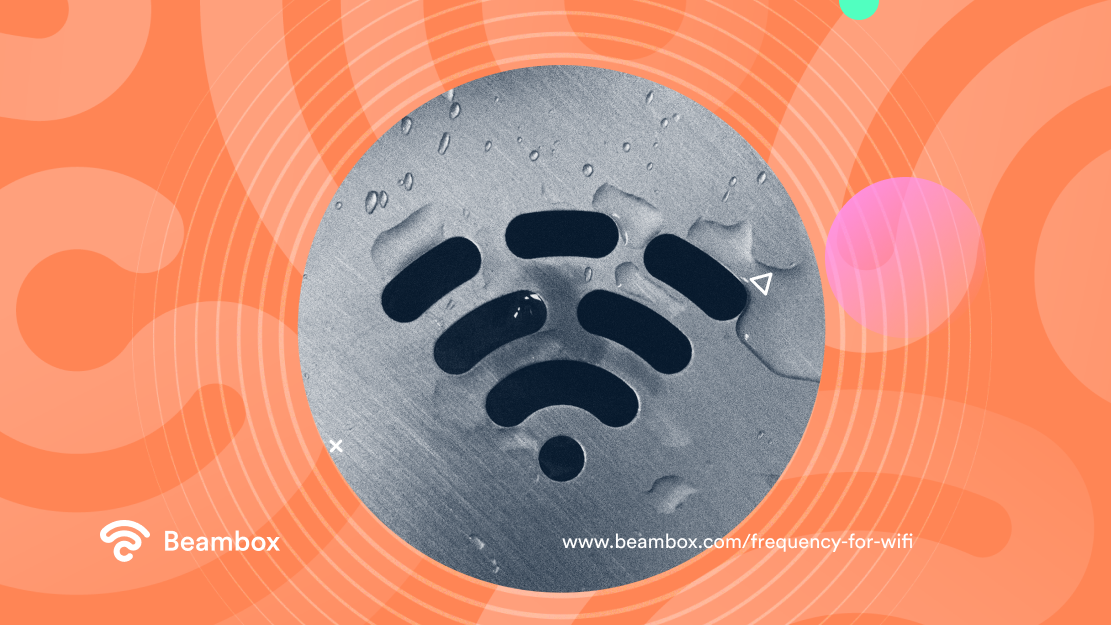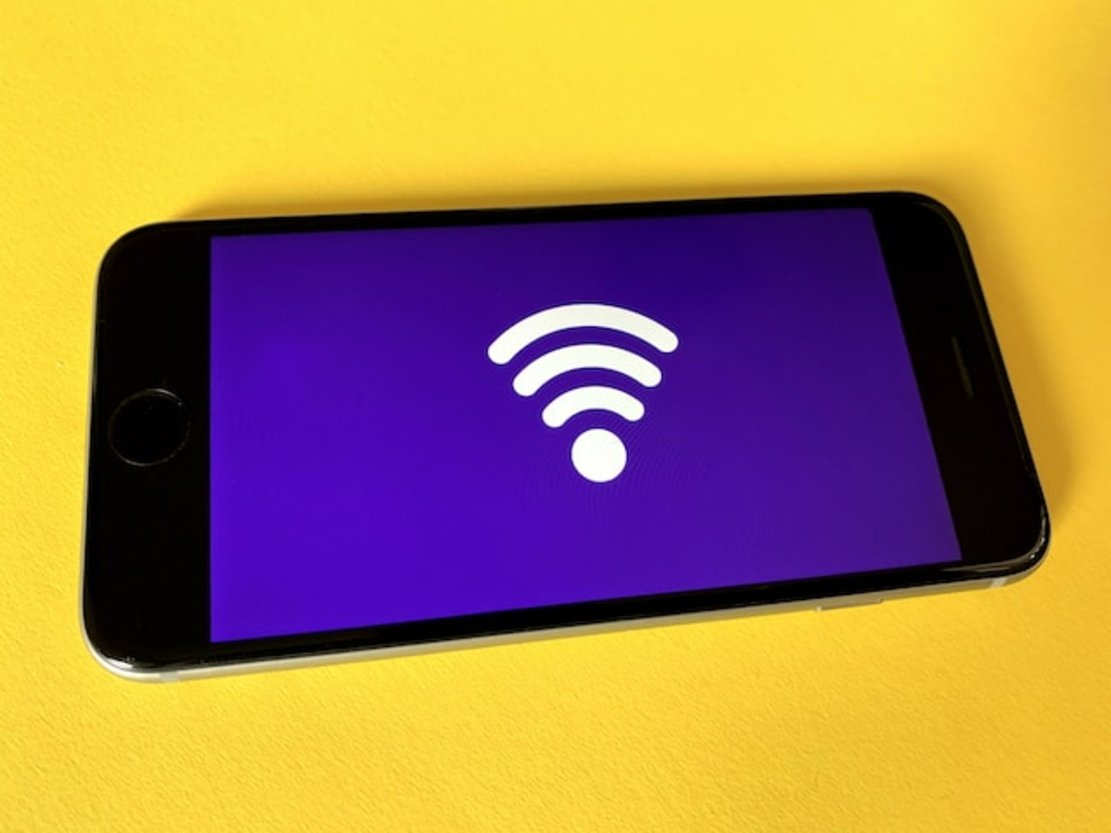Wifi Frequency: Exploring Different Bands and Uses
In a world where even your coffee machine connects to WiFi, it’s crucial to understand what is WiFi frequency, why it matters, and how to make your connection as fast as the reaction to “Wait, you have free WiFi?”
In this guide, we’ll break down what a WiFi frequency band is, explore the different WiFi frequency bands, how they work, and most importantly, how to choose the right one for better connection, whether at home or for your business marketing strategy.
Plus, we’ll throw in a few simple tips to boost your WiFi network frequency, reduce interference, and give you a smoother internet experience without rage-quitting your video calls. Ready? Let’s go!

What Is Frequency in WiFi?
We promised to answer What is the frequency of WiFi? Here’s the promise kept!
So, WiFi frequency is simply the waves on which the internet runs. No wires, no cables. Just radio waves flying through the air, helping your phone or laptop catch the internet.
Your router (that little box with antennas) “broadcasts” the signal at a certain frequency. Most often, 2.4 GHz or 5 GHz. These numbers aren’t just for decoration. They are units of measurement that show how fast the signal “runs.”
Wi-Fi started appearing in the world back in the ‘70s, but only became popular in the ‘90s. That’s when the first standards appeared: 802.11a, then b, g, n… but no, you don’t need to memorize all that. What matters to us is something else.
There are frequencies, and there are channels. Inside each band, there are smaller “strips” — for example, the 2.4 GHz band has channels like 2.412 GHz, 2.432 GHz, and 2.457 GHz. It’s like train tracks running side by side — each channel guides data along its path so trains don’t collide.
And here’s another thing: interference. If your neighbor uses the same channel, your internet might slow down. And if you have a microwave oven working on the same frequency as your WiFi, guess who wins. (Hint: it’s not your internet.)
So when someone asks, “What frequency does WiFi use?” now you know: every WiFi has its frequencies, but those are only part of the equation. A frequency refers to the overall range of radio waves utilized by your WiFi. But if you’re trying to get a better idea of how your WiFi works or gain insights into connectivity issues, you also need to know about bands, channels, and more.

Overview of WiFi Frequency Bands
If you’ve been thinking that WiFi frequencies and bands are the same thing, don’t worry, you’re not alone! A lot of people think that way. Imagine that a frequency band WiFi is like a whole neighborhood in the city of radio waves. A single frequency is like a specific street or lane in that neighborhood where your internet signal travels.
Today, WiFi mostly works in three main “neighborhoods”: 2.4 GHz, 5 GHz, and the newest kid on the block: 6 GHz (yes, the one from WiFi 6E, if you’re following tech trends). Each of these bands has its own personality: one is slow but reliable, another is super fast but hates walls.
And that’s not all! Each band has its own WiFi channel frequencies — smaller divisions that let your devices pick up the signal without chaos and interference. Similar to traffic lanes on a highway. If everyone sticks to the same lane, it’s a jam. But if you spread them out, your internet zooms like a Formula 1 car.
So, knowing the difference between these terms is key to not just “getting online,” but getting the most stable, fastest internet possible with minimal interference. Plus, it’ll make your router perform like a true champion.
Ready to dive into what are WiFi frequency bands in detail? We promise it’ll be fun. And useful — especially if you want your devices to catch the signal, not just in the room next to the router, but even on the other side of your house.
Characteristics of the 2.4 GHz Band
Here from the very beginning. Reliable like an old fridge: maybe not the fastest, but it works everywhere. If you’re wondering about home WiFi frequency, this is it. Most often, it’s the 2.4 GHz band that’s responsible for getting your internet from your router to every room of your home or workspace. - Range The 2.4 GHz band is basically the OG of WiFi. Device makers love it because its longer waves can cover big spaces and easily get through walls. So if you’ve got a big apartment with thick walls or your router is stuck in one room while you’re chilling in the kitchen watching videos, this band’s what you need. - Speed 2.4 may be stable, but don’t expect record-breaking speed. Thanks to its longer wavelength, it sneaks through walls and furniture like a pro. The catch? It’s pretty popular, so it can get crowded and noisy, which sometimes slows things down or makes your connection act a bit moody. But hey, with speeds up to 300 Mbps, it’s fine for streaming videos, scrolling memes, or handling your daily internet tasks without fuss. - Interference Sadly, this frequency is used by lots of things like Bluetooth headphones and microwave ovens (yes, that thing that makes your popcorn!). So it gets really busy and noisy. The 2.4 GHz band is a crowded street, and the 5 GHz band is an empty road. With all that crowd, your internet may get a bit sluggish or just act a little weird. - Best Use Cases Most businesses use the 2.4 GHz band for their networks. This range works great for smartphones, smart bulbs, sensors, and even kettles. As for speed, you already know there’s nothing to be proud of, but the signal definitely won’t disappear if you move to another room. And if your kettle suddenly decides to steal the signal, just tell it that the internet is more important!
This is a typical example of the frequency of WiFi that balances coverage and performance.

Characteristics of the 5 GHz Band
5 GHz WiFi waves frequency is like a sports car: not for leisurely strolls, but for speed. Perfect for those who want maximum performance but are ready to sit closer to the router (sometimes up to 1300 Mbps). - Range 5 GHz runs fast but doesn’t like to go far. It gives you awesome internet speeds, but as soon as you step away from the router, it starts to act up. If you have a dual-band router and a small apartment, this is the perfect choice: fast, reliable, and with fewer interruptions. Just don’t wander off too far with your laptop, or your internet might shout, “Wait for me!” and get lost along the way. - Speed So, to make sure everyone remembers: the 5 GHz band is all about speed! Why is it so fast? Because the waves are shorter and can carry more data in less time. You can catch speeds up to 1300 Mbps, which is pretty awesome! That’s why this band is perfect for fiber internet, smooth 4K video streaming, online gaming where every millisecond counts, and video calls that don’t freeze at the worst moments. - Interference If you start counting all the devices in your home that use this signal, it will be way fewer than on 2.4 GHz. Remember that the 5 GHz signal has a shorter wavelength? This is important because it passes through obstacles worse. Because of this, the signal weakens faster. But fewer devices “compete” for the signal, so the connection works more stably and faster. - Best Use Cases Love watching videos in good quality, playing online games without lag, or working on video calls? Then 5 GHz is your buddy. It’s made exactly for these things. Gaming consoles, smart TVs, and modern laptops are also big fans.
So, what frequency is WiFi on 5 GHz? It’s the band that offers higher speeds and fewer “traffic jams.” But don’t wander too far from your router.
Introduction to the 6 GHz Band
Here’s the new guest at the party — 6 GHz. This WiFi frequency range was added with the arrival of WiFi 6E. What does this mean for you, the user? Potentially — the highest speeds, minimal interference, and maximum stability. The catch? Not all devices support this frequency yet, and its range is the shortest. - Range Shortest range but potentially higher speeds (conflicting data). With the router in the same room, it’s super strong. Further out, the signal gets weaker. Why? Because 6 GHz waves are super fast but also super delicate. They don’t like walls, doors, closets, humans, basically anything that gets in the way. They need space. Ideally, nothing should stand between your router and your device. Yes, even a potted ficus can mess up your signal. That’s why this band is perfect when all your devices are chilling in the same room with the wireless internet. - Speed WiFi 6 is the latest invention. This new standard offers improved WiFi signal frequency for faster speeds and better connection reliability than earlier versions. And the speed here is seriously out of this world. Theoretically, up to 9.6 Gbps. That means you can download a movie faster than you can find your popcorn. But again, only if your gadget supports WiFi 6E. Otherwise, all this awesomeness will just pass you by. On the bright side, the speed stays stable even when everyone at home is glued to TikTok, Zoom, and YouTube in 4K, all at once. - Interference The least congested band is suitable for dense environments. Since this is the new kid on the block, it’s still pretty empty. No microwaves, no annoying Bluetooth. Even your neighbor’s WiFi hasn’t discovered it yet. Imagine — your signal flying free, no lines, no traffic, no shouting “why is it lagging again?!” But just so you know — this calm won’t last forever. In a couple of years, this paradise might get crowded too. - Best Use Cases This is the perfect option for geeks, gamers, VR headsets, smart homes of the future, and everyone who’s already living in the year 2035. If you’re not sure whether you need this band, maybe it’s not time yet. But if you want everything to run smoothly and stay connected, even with 20 smart devices buzzing in your home, 6 GHz is your new best friend.
Want the most out of your internet? Time to get familiar with the WiFi frequency channel on 6 GHz. Just make sure your device is ready for greatness.
Fun Fact! When you switch channels on your router, silently thank John O’Sullivan — an Australian engineer who, back in 1992, along with his team at CSIRO (the Australian scientific agency), basically laid the foundation for modern Wi-Fi. The idea was brilliant: instead of sending a signal over one frequency, break it into dozens of smaller channels that don’t interfere with each other. That’s how WiFi channel frequencies came to be — the very ones we use every day without even thinking about it.

Comparing WiFi Frequency Bands
To better understand what is WiFi frequency band and how to choose the right one for your home or office, let’s compare the main WiFi frequency ranges — the newest 6 GHz, 2.4 GHz and 5 GHz. Each has its pros and cons: some are better at coverage, some at speed, and some at signal stability.
Frequency Band Range Speed Interference Best For 2.4 GHz Large coverage area Up to 300 Mbps High — many devices and household appliances IoT devices, older gadgets, and thick walls 5 GHz Medium coverage area Up to 1300 Mbps Lower — fewer devices, less interference Online gaming, streaming, and modern devices 6 GHz Smallest coverage area Highest (WiFi 6E) Very low — new range, almost no interference AR/VR, high-end gadgets, WiFi of the future
How to pick the right frequency: - If you want WiFi that reaches every corner of your home and goes through walls, go with 2.4 GHz. - If you want faster speeds and a steady connection, but don’t need it to go super far, 5 GHz is your best bet. - If you love the newest tech and want the fastest WiFi with almost no interruptions, 6 GHz is the way to go. Just remember, it doesn’t travel far, and not all devices support it yet. - Or, if you want to keep it simple, get a tri-band router that uses all three frequencies.
Final Thoughts
Finding the best WiFi carrier frequency is doable, but it might take some time. Moreover, you must evaluate other elements like the environment or network capabilities to improve your WiFi performance.
Understanding the difference between frequency ranges will help you get reliable WiFi wherever you need it. If you want your devices to always hold a strong signal and not freeze, the best choice is a modern router that supports multiple frequencies at once. It will manage the load by itself and make your life easier.
Get Started With Free WiFi Marketing
Beambox helps businesses like yours grow with data capture, marketing automation and reputation management.
Sign up for 30 days free


